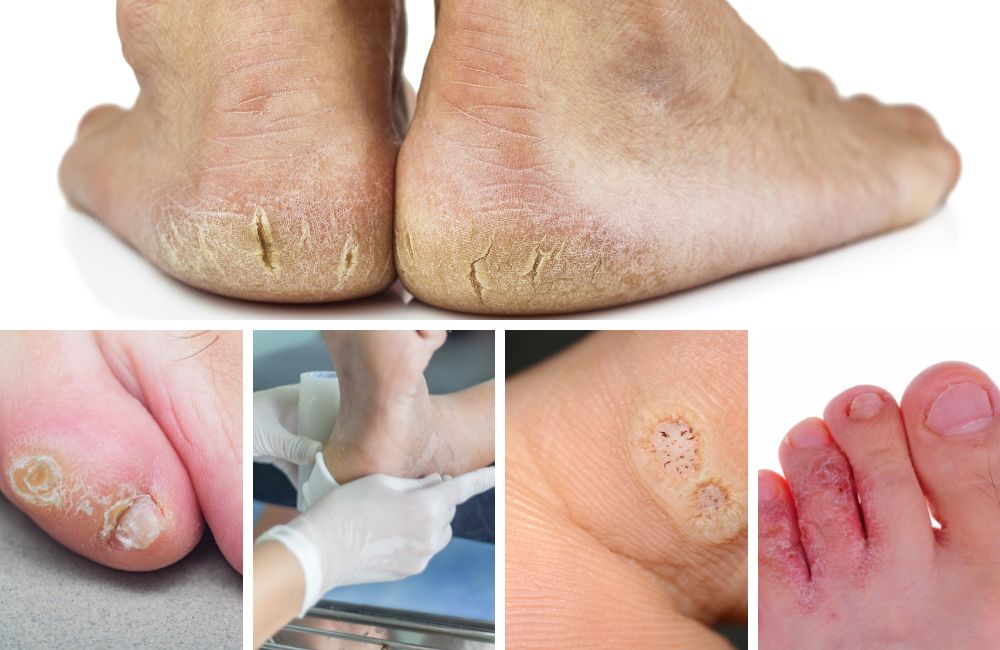
Feet have a hard life. We make them carry us around and we poke them into shoes, whether they are a good fit or not. Our feet can also have some of the more painful skin complaints which we ignore because we’ve hidden them in shoes. Luckily podiatrists can usually help with a little work along with the right products and advice. Below we’ll introduce the 5 most common skin conditions podiatrists treat.
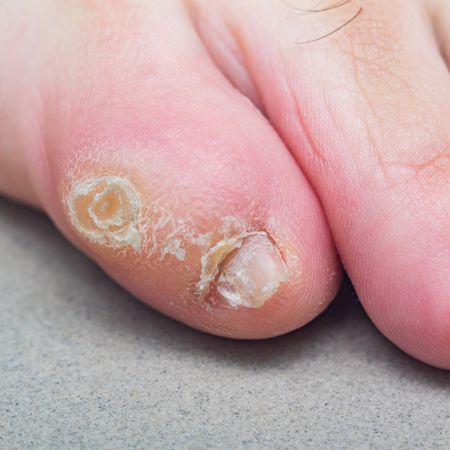
Corns and Callus
Corns and callus are some of the most common complaints podiatrists treat. Calluses are thickened, hard skin that occur on the foot in areas that receive increased friction or pressure. Corns are very similar but tend to be more centralised and penetrate deeper into the skin. They occur on the skin on the toes or beneath the foot and are often surrounded by callus.
Your podiatrist will remove the buildup of skin in a relatively painless way. This should give you immediate relief. They will then explore ways to prevent rapid reappearance with footwear advice or modification and offloading.
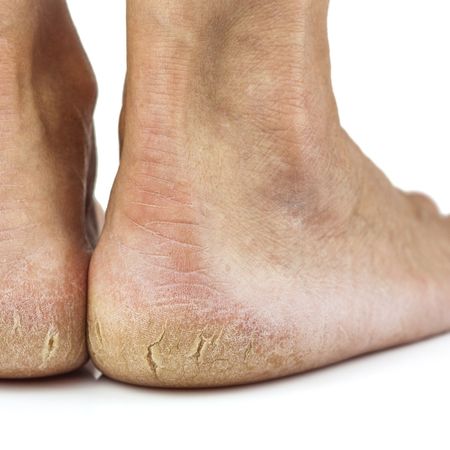
Cracked Heels
Cracked heels can be quite painful or just unsightly. They are also a break in the protective barrier of our skin, so may let in nasty bacteria resulting in infections. Cracked heels result from dry skin and thickened skin (callus), that cracks and breaks under pressure.
Your Podiatrist will remove the buildup of skin and either reduce or eliminate the cracks. They will also recommend products to increase moisture to the area and offer footwear recommendations to reduce recurrence.
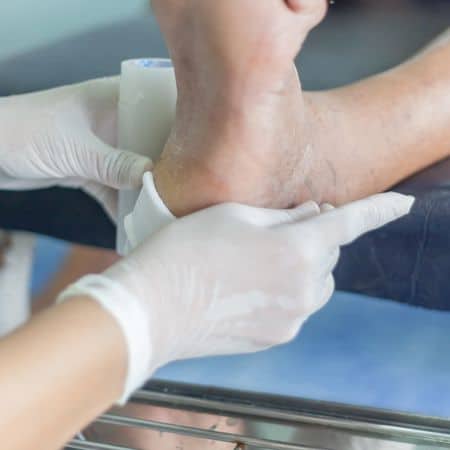
Ulcers
An ulcer is an open wound or sore that will not heal or keeps reoccurring. They are most often associated with Diabetes. Several different types can affect your feet:
- Neuropathic – where you can’t feel an injury due to nerve damage.
- Pressure – when skin in a particular area is damaged by constant pressure or friction, you might develop an ulcer.
- Arterial or venous – these ulcers form because of reduced blood flow to your extremities such as your feet.
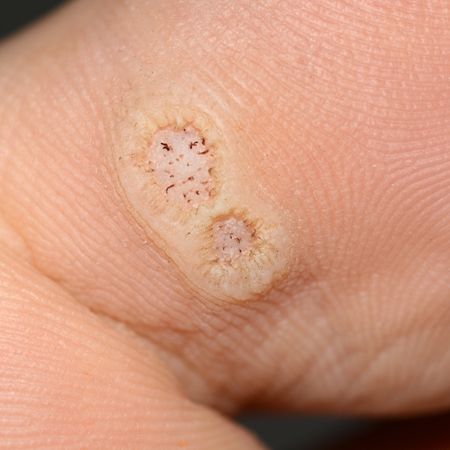
Plantar Warts
Warts are a noncancerous growth, caused by a viral infection. The virus can enter the body through cuts, cracks in skin or by direct contact with a person who has warts.
A plantar wart is just a wart that occurs on the plantar (bottom) surface of the foot. They look a little different because we stand on them and force the lesion deeper into the skin tissue. The plantar warts may occur singly or in clusters. They appear as thick, rough, callus-like thickenings on the soles of the feet. There will often be multiple small black “dots” at the surface, which are actually tiny blood vessels. Plantar warts are usually tender.
Plantar warts are contagious. If you see early signs of a plantar wart forming, don’t let it get any worse. Talk to your podiatrist and have your foot examined. The earlier you detect and diagnose this condition, the more options you have for treating it.
Advance Foot Clinic podiatrists recommend treatment with Swift Microwave therapy to resolve plantar warts.

Tinea Pedis (Athlete’s Foot)
Tinea Pedis, commonly known as athlete’s foot, as a fungal infection that spreads easily which our podiatrists diagnose and treat regularly. It causes a red, scaly, itchy, peeling and dry rash. Because fungus thrive in moist, warm environments Queenslanders are often affected. Unfortunately, you might catch athlete’s foot in many places including communal showers, pools, soil and even floating in the air.
Your podiatrist will recommend an effective topical antifungal cream to help clear this up.
Think you have one of these skin conditions podiatrists treat?
It’s best you have it checked by a professional to confirm the diagnosis and begin the correct treatment. You can book an appointment online and get to know your podiatrist before your appointment!
Contributed by Podiatrist Pam Denman

